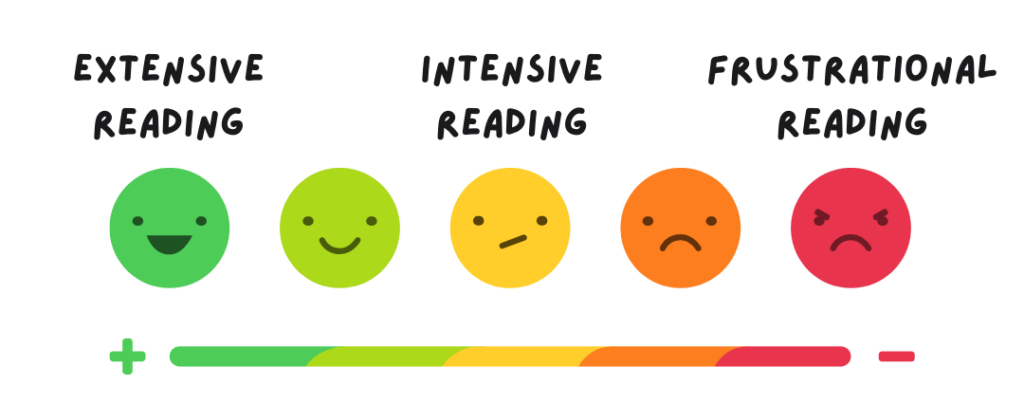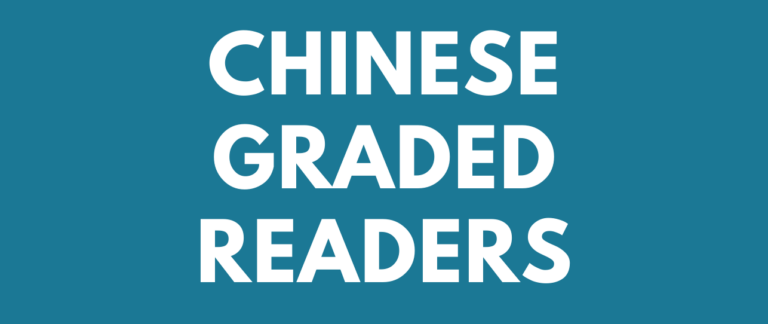How to Learn Chinese Faster — The Science Behind the Du Chinese Method
Our educational philosophy focuses on key scientific principles that facilitate natural language acquisition, creating an immersive, enjoyable, and efficient learning experience. Allow us to introduce the science behind the Du Chinese method and why you can rely on us to help in your language learning journey!
The Science of Extensive Reading
Reading is a powerful and natural way to learn any language. This is especially true for Chinese, where you also need to learn a completely new writing system. By engaging with stories, you experience words and grammar in context, reinforcing your learning through repeated exposure. This natural spaced repetition helps you learn Chinese twice as fast, keeping you motivated and building your confidence.
There are different types of reading strategies, each with its own benefits and challenges:

Frustrational Reading
Frustrating, slow, and intensely difficult kind of reading. Involves reading material that is too difficult, leading to frustration and disengagement, which can hinder learning progress. This might be equivalent to reading Shakespeare, or trying to push through a Chinese text that’s far too difficult, like the original Three Kingdoms.
Intensive Reading
The kind of reading you often do with textbooks. You can understand the text, but new vocabulary and unfamiliar grammar slows down the process and takes up a lot of energy. It focuses on short passages packed with new information, which can be useful for instructional settings, but can be overwhelming and less engaging.
Extensive Reading
Emphasizes reading longer texts at an easier level, which makes it easier to enjoy what you’re reading and pick up new words naturally. It’s the kind of reading you’re doing now—you can focus on the story or message, and any unfamiliar words can be learned comfortably along the way.
Extensive Reading is the most natural and effective way to achieve fluency. By reading texts that interest you, you’re more likely to read regularly, boosting self-esteem, motivation, and vocabulary.

This method avoids the pitfalls of Frustrational and Intensive Reading, providing comprehensible and enjoyable content that builds speed, fluency, and a solid foundation for mastering Chinese.
The Du Chinese Method ensures a stress-free reading experience with content that is both interesting and informative, including adaptations of classic stories, current events, and cultural insights. To address the frustrations of textbook learning, Du Chinese follows the Extensive Reading approach, offering a wide range of engaging material suited to various skill levels and interests. This approach keeps learners motivated, boosts confidence, and helps them naturally expand their vocabulary.
The Science of Memory
To understand why reading helps you learn Chinese faster, we turn to the Ebbinghaus forgetting curve, spaced repetition, and retrieval techniques.
The Ebbinghaus forgetting curve is used to describe the amount of time it takes to forget new information, be it words, grammar, or characters.
In essence, newly learned information will be forgotten very quickly unless it’s reinforced and reviewed. Once a new piece of information is reviewed once, it will take longer for it to be forgotten.
As this cycle repeats, it takes more and more time for information to be forgotten, until eventually it is stored almost permanently in long term memory.

Spaced repetition refers to this review of new information in a way that will allow you to commit it to memory in the most efficient span of time.
When writing articles, our team limits vocabulary to what’s appropriate for each reading level while maintaining an organic writing style. This approach allows readers to naturally reinforce and review key vocabulary in different contexts while still reading comfortably. This type of reading leverages retrieval techniques that involve actively recalling information from memory, further strengthening long-term retention. These techniques include:
- Recall: Actively retrieving vocabulary and grammar from memory without cues, which strengthens memory retention and aids long-term storage.
- Recognition: Repeatedly seeing words and phrases in context, enhancing the ability to identify and understand them quickly.
- Relearning: Encountering previously learned material again, making the relearning process quicker and more efficient.
Extensive Reading naturally incorporates these retrieval techniques by embedding vocabulary and grammar in varied and meaningful contexts. This method of repeated, contextual exposure strengthens long-term memory storage, helping you retain information and get closer to fluency. Combined with Du Chinese’s commitment to writing genuinely interesting and culturally relevant material, readers can read for fun while strengthening their vocabulary and naturally picking up new words along the way. By regularly engaging with the language through reading, you are continually reinforcing and building upon your existing knowledge, making the path to fluency more effective and enjoyable.
Effective Language Acquisition
To further support natural language acquisition, Du Chinese employs three key strategies:

- Comprehensible Input: Learners acquire language best when exposed to material slightly above their current level. This manageable challenge improves retention and mastery.
- Scaffolding: Revisiting words, phrases, and grammar in various contexts builds on existing knowledge and deepens understanding.
- Contextual Learning: Presenting language in real-life situations helps learners retain and apply what they learn more effectively.
By adhering to these principles, the Du Chinese method supports a seamless and enjoyable language learning journey. With Extensive Reading at its core, learners can build fluency and confidence naturally and effectively.







